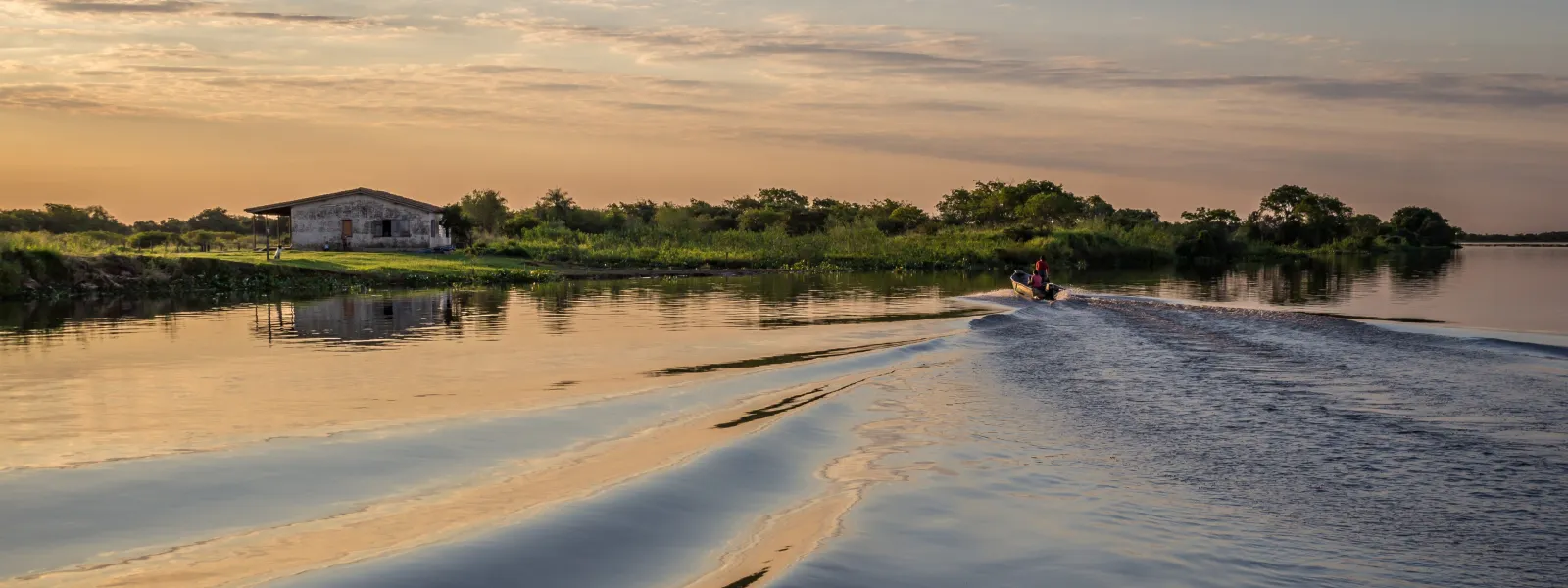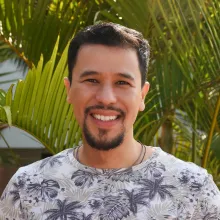
Biocultural Corridor: Hope for a better future for the Pantanal
Photo: Shutterstock.
By Jorge Lu Palencia and Andrea Islas López*
The Pantanal is a unique and rich wetland. It integrates elements of the semi-arid Amazon Rainforest, the Atlantic Forest (humid forest), the Cerrado (tropical savannah), the Chiquitano Dry Forest and the steppe savannah of the Chaco. With an extension of almost 18 million hectares, it crosses the borders of Bolivia, Brazil and Paraguay. Its biodiversity is fundamental to water conservation, food production, climate regulation, and the life and culture of millions of people: farmers, traditional communities, quilombola communities, and indigenous peoples.
The Pantanal, however, is in danger of disappearing due to devastating seasons of forest fires and other threats caused by structural deficiencies in the institutional management of the ecosystem.
In 2022, civil society organizations asked the Ramsar Convention to apply the protection mechanisms for wetlands of international importance to the Pantanal, warning that the number of heat sources had increased to five times the historical average. And in 2024, they reported that the fire season again exceeded historical average conditions.
A few weeks after the fires, in November 2024, the Popular Water and Climate Committees—made up of small farmers from the Paraguay River basin—gathered to celebrate nature and reaffirm their commitment to water conservation through the self-affirmation of the Paraguay River / Pantanal Biocultural Corridor.
These committees have been working for more than 25 years to confront the socio-environmental threats posed by mining, projects such as waterways and hydroelectric dams, and soy and sugarcane monocultures.
They represent an alternative model of ecosystem management in which communities organize themselves to protect their territory and promote sustainable practices.
What does self-affirmation of the biocultural corridor mean?
In environmental practice, the term “corridor” is applied to ecological corridors, whose main function is connectivity, i.e., the movement of wildlife species for shelter, feeding and reproduction, as well as plant dispersal.
Adding the “biocultural” element to the corridors means thinking that human beings are part of the ecosystem, that the conservation of nature does not exclude the purpose of making possible the full life of human groups, and that culture—materialized in the diverse world views, ancestral knowledge, traditional practices and forms of organization—is a fundamental element for effective conservation of nature.
The self-affirmation of the popular committees of the Pantanal is a milestone that reminds us that the protection of nature does not depend only on the action of governments but is made possible by the awareness and popular initiative of communities and peoples. It shows that the exercise of public participation rights is indispensable and fundamental for public policies that make life and socio-environmental justice possible.
Biocultural corridors make it possible to integrate conservation and economic and cultural activities with ecological practices, thus promoting a more sustainable future for the communities and the Pantanal region.
They represent the birth of a more legitimate and effective conservation initiative, a participatory management and an organizational system in which decisions and policies flourish from the bottom up.
An alternative model to poor institutional governance
In the context of the climate crisis and a political and economic system that exacerbates the threats, the devastating fire seasons in the Pantanal highlight the problems of land-use change, irresponsible use of fire for agricultural and cattle raising activities, inadequate management of resources to prevent and fight fires, and the lack of coordination and transboundary cooperation.
Structural deficiencies in institutional governance have led to inadequate public policies or even to habitat loss through incentives for monocultures and extensive cattle ranching, water regulation using waterways and dams that provide ecosystem services, subsistence and culture for local communities and indigenous peoples.
Faced with this panorama, the self-affirmation of the biocultural corridor emerges as an alternative model of territorial management, driven by the people as a response to the lack of effective public policies.
With this model, the communities promote conscious popular education to protect water and adopt ecological agricultural practices, instead of relying on a system that favors an economy of degradation at the expense of habitat destruction.
Reasons to be hopeful about preserving the Pantanal
The self-affirmation of the biocultural corridor allows us to be optimistic due to:
- The resilience of the people of the Pantanal, which allows them to overcome the devastation and open an alternative path for the conservation of the ecosystem, with the initiative and participation of the farmers.
- Emancipatory awareness and action that puts life at the center, based on the rights of nature, respect for human rights, and social and environmental justice.
- An organization that resists and builds itself democratically, based on the Pantanal’s identity, mystique, ancestral knowledge and sustainable traditional practices.
- A popular and participatory management model that harmonizes conservation and integral development goals, builds bridges with other communities and indigenous peoples, and has the potential to expand as a transboundary socio-environmental governance system with an ecosystem approach.
Thanks to the popular committees, the Pantanal is alive and has possibilities for a more sustainable future. The creation of the biocultural corridor is a clear sign of hope for this vast and rich wetland.
This model, based on popular management and respect for nature, offers a viable alternative to the threats facing the Pantanal and is a source of inspiration for other territories in crisis on the continent.
* Jorge Lu Palencia is an attorney with AIDA's Ecosystems Program; Andrea Islas López is an attorney and intern at AIDA.
Jorge Lu Palencia

Jorge Lu Palencia is Guatemalan and an attorney with AIDA's Territories Program, working from Guatemala City. He is a graduate of Mariano Galvez University in Guatemala. He holds a Master's degree in Environmental Law from the same university. Jorge has significant experience in environmental matters in the public administration of his country and in international cooperation, and as a consultant for non-governmental and academic organizations. He has been a professor of law and currently teaches environmental forensic research at the Rafael Landívar University in Guatemala.
